Cable cars, a giant leap forward in urban transit technology when Andrew Hallidie invented them in 1873, dominated San Francisco streets until the earthquake and fire of 1906 decimated both cable machinery and the cars themselves. After that, cable cars were largely limited to steep hills while larger, faster electric streetcars carried the heavy loads on main routes. High operating costs gradually pared down the remaining cable car lines. In 1947, an attempt by a misguided mayor to junk the Powell Street cables was slapped down by a women-led civic coalition helmed by Friedel Klussmann, but even her heroic efforts seven years later could not avert the loss of half the remaining cable car trackage.
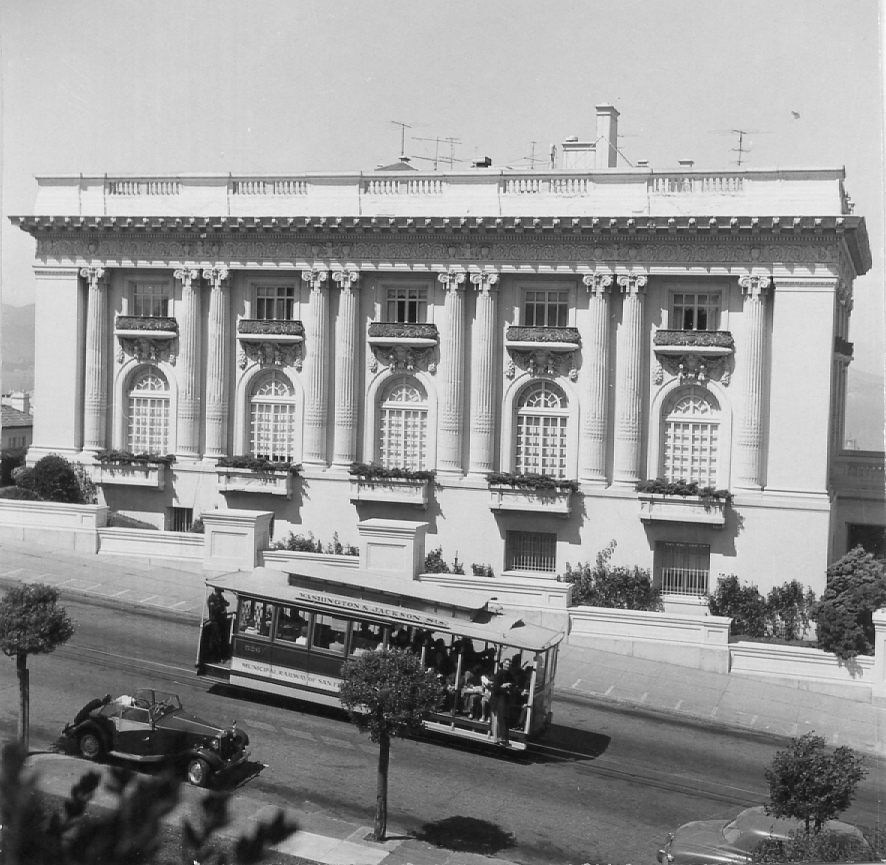
When the reduced cable car system reopened in 1957, it was still old. During the lengthy shutdown of the California and Hyde Street trackage to create a compatible, connected network, Muni focused on consolidating operations, not on complete renewal. Capital funding, as usual, was in short supply, so much so that in this same period, Muni had to effect a complicated lease arrangement for used PCC streetcars from St. Louis so the last of its original streetcar fleet could finally be replaced.
Having ‘saved’ the cable cars, most San Franciscans started taking them for granted again. But the system was growing sclerotic. In late 1979, a rash of accidents shut the system down for emergency repairs that lasted six months. Muni commissioned a complete engineering evaluation of the system, which concluded that it had to be rebuilt from the hole-in-the-ground up.
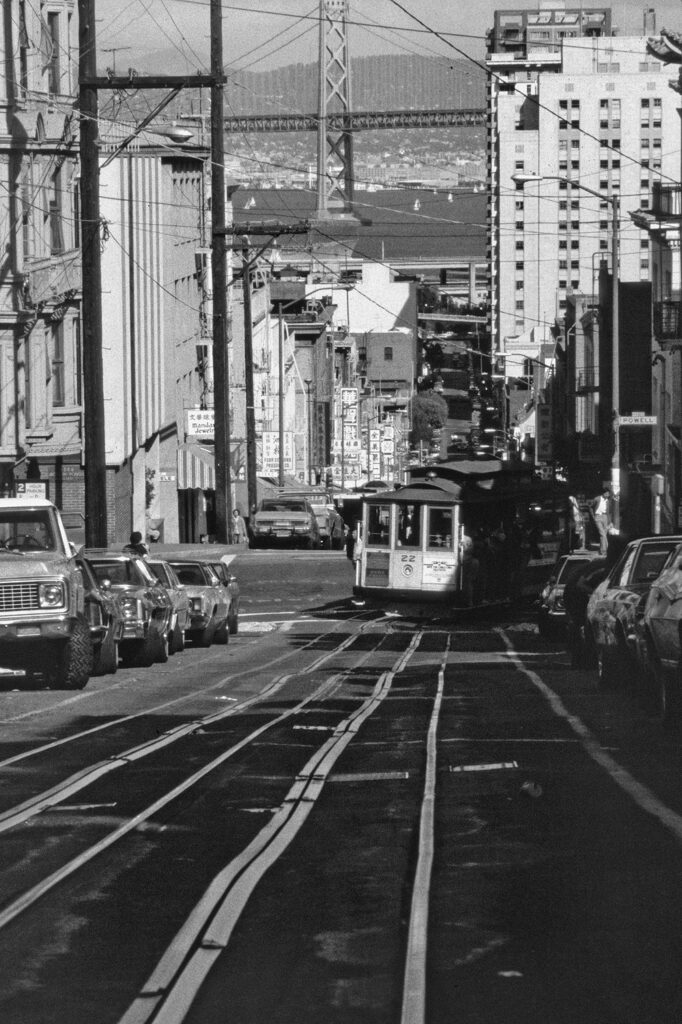
A $60 Million Job
The city’s politicians and business community rallied. Mayor Dianne Feinstein took personal charge of the effort. She helped win federal funding for the bulk of the rebuilding job.
She recruited Chevron USA head Ken Derr to ‘tin cup’ leading San Francisco businesses to raise the required local matching funds. Virgil Caselli, then general manager of Ghirardelli Square, ran the ‘Committee to Save the Cable Cars’ that coordinated fundraising. In all, public and private contributions approached $60 million.
Some saw the rebuilding as an opportunity to expand the system. Talk started again of extending the Powell-Mason line, whose Bay & Taylor Street terminal WAS the bay shore when it opened in 1888, four blocks north to the heart of Fisherman’s Wharf, or tying the outer ends of the two Powell lines together via Beach Street (which Muni studied in 1965). Another dream was extending the California line’s eastern terminal a block east to a plaza (which was then in the shadow of the Embarcadero Freeway). Still other ideas would have restored Cal line trackage west of Van Ness to Japantown or Fillmore, or turning that line up Hyde to join the Powell-Hyde line and add more capacity to the Wharf (a route almost adopted in 1954).
But none of that happened, because Feinstein knew about the City’s addiction to planning paralysis and would have none of it. Major changes would trigger an environmental impact study, which would delay construction a year or more, missing her goal of having the little cars back on line in time for the Democratic National Convention, which San Francisco would host in July 1984. So the only changes allowed were for the sake of improved safety, flexibility, and operability. For example, the Powell lines were engineered so that the longer, higher-capacity California-type cars could run safely on them and reverse with switches at the Powell line terminals, since the Cal cars were too long for the Powell turntables.
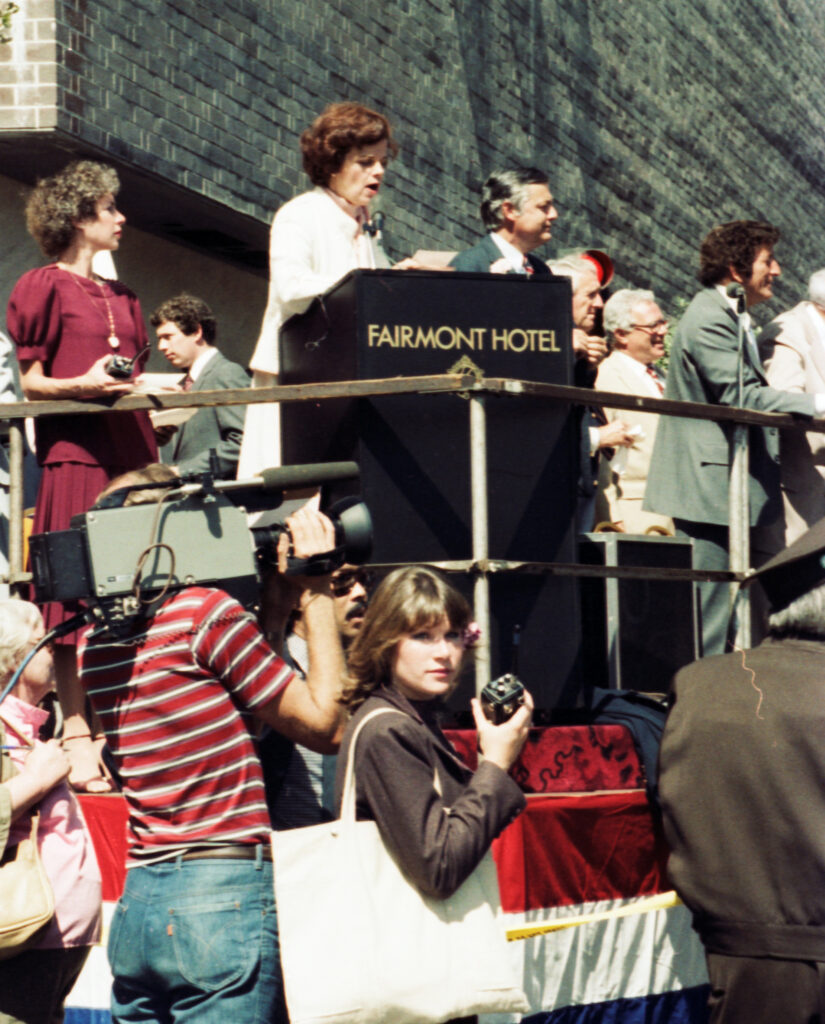
Swarm of workers
Before dawn on September 22, 1982, the last passenger-carrying car bounced over the old cable car system. Soon the cables would fall silent for 21 months as workers swarmed the routes.
All things considered, the rebuilding went quite well, especially since there had been essentially no cable car engineering performed in the previous 95 years, and there was the potential for nasty surprises under streets and structures that had been little touched over that same period.
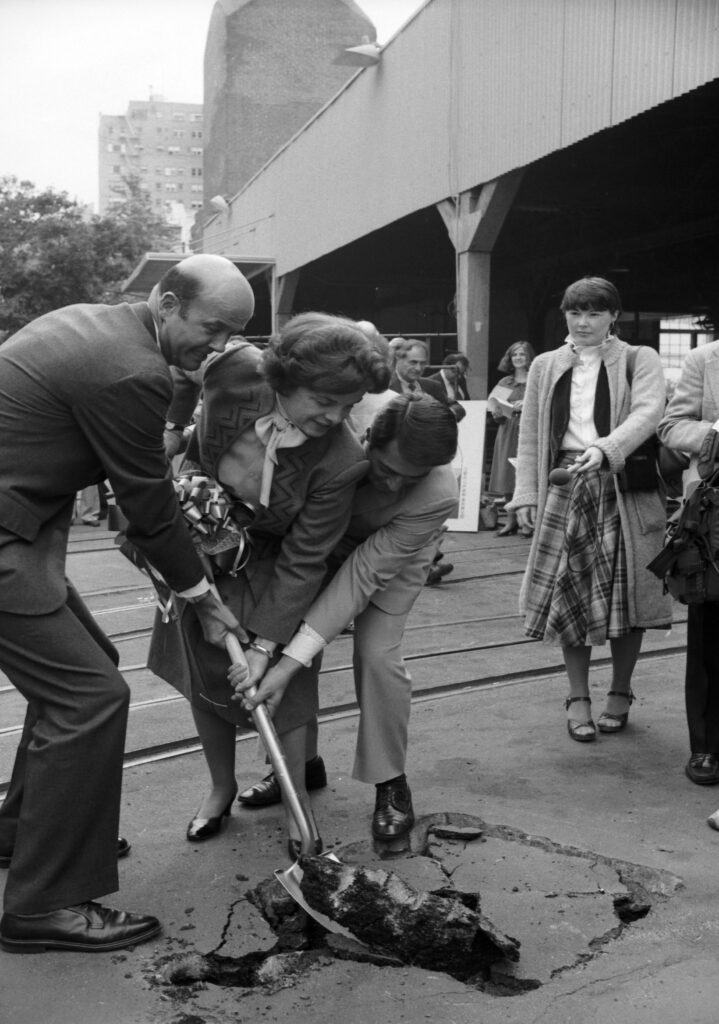
Contractors did get a big surprise when they started working on the venerable carbarn and powerhouse at Washington and Mason. Originally built in 1887 and rebuilt after being destroyed in the 1906 earthquake and fire, it was found that the exterior brick walls were standing largely out of habit–there was no foundation to speak of.
The plans called for keeping the exterior walls only for appearance’s sake, building a modern steel and concrete structure inside. Still, they had to devise and implement a fix for the foundation problem, while staying within the schedule Mayor Feinstein was birddogging.
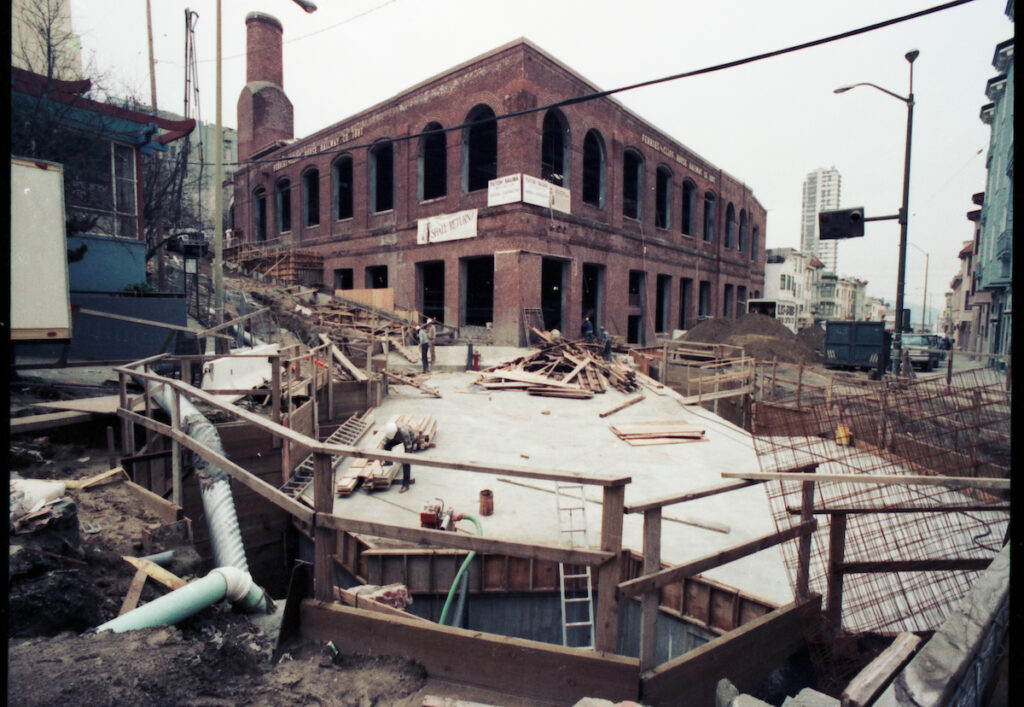
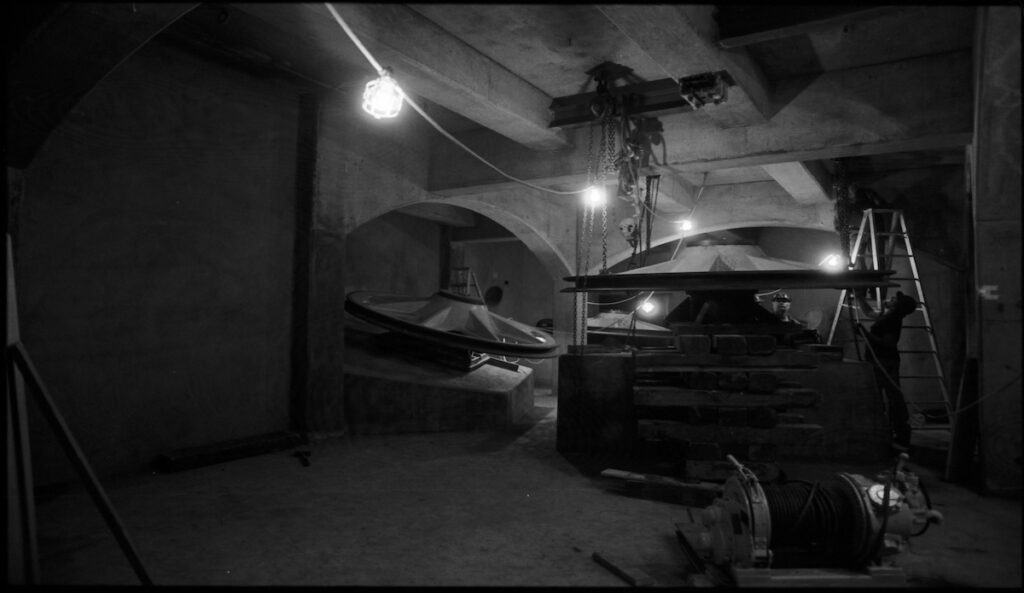
The carbarn that emerged looked the same from the outside, but was completely new inside, from the cable winding machinery to a completely enclosed car storage area upstairs to better protect out-of-service cars.
On the street, 69 blocks of track were completely rebuilt with heavier rails and deeper flangeways, cable channels of concrete instead of rusted iron, and new pulleys with space-age components like Teflon for reduced friction. Curves were now slightly banked, putting an end to the thrilling lurch around corners accompanied by the conductor’s yell, ‘koutferdacoiv’ [look out for the curve]!
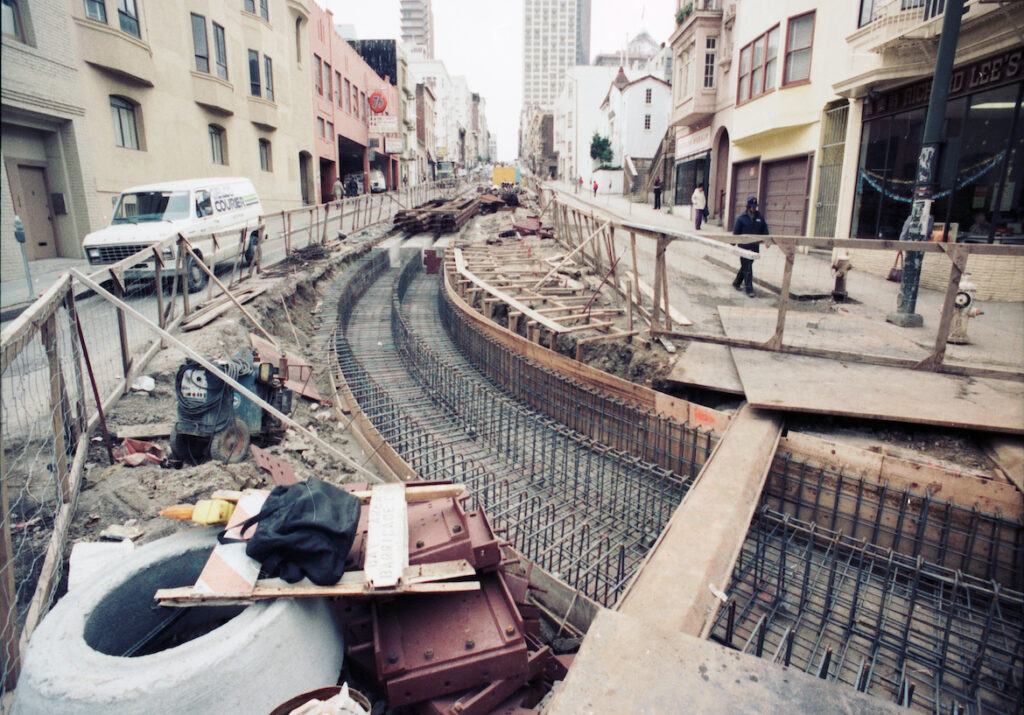
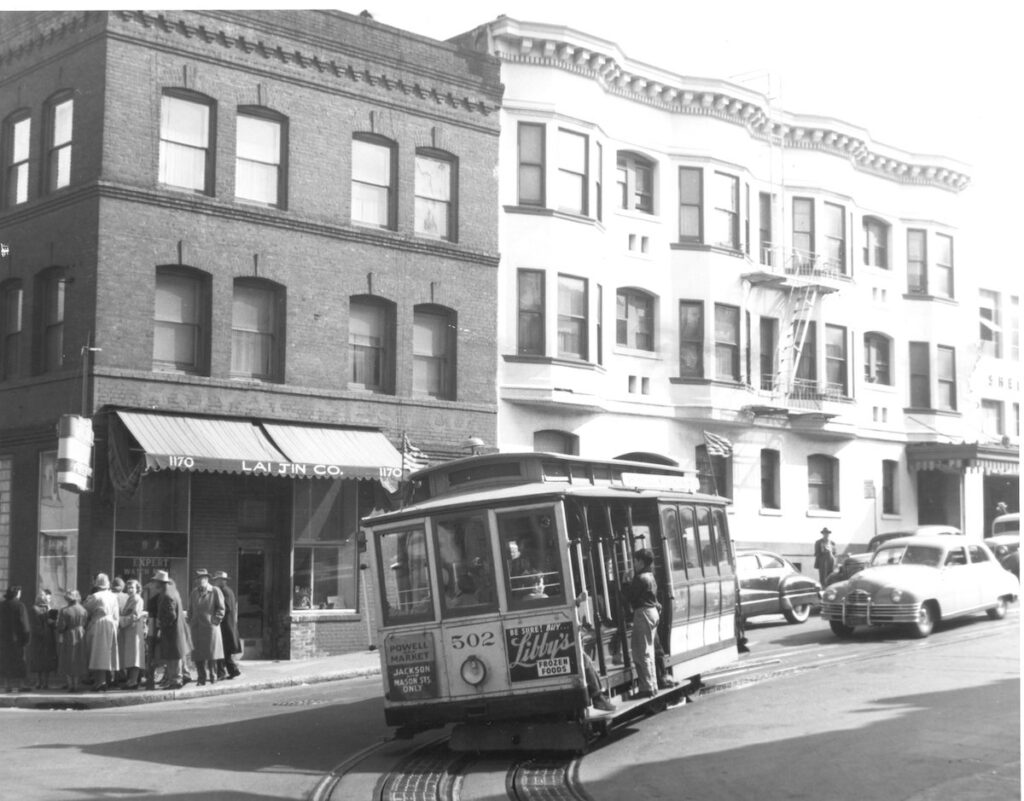
The cars themselves got new, stronger trucks and improved brakes. A couple of cars were rebuilt; all were repainted. The Powell fleet received a new paint scheme derived from the 1888 Powell Street Railway livery. Car No. 3 was left in the Muni green and creme livery it had worn since the mid-1940s and dedicated to cable car savior Friedel Klussmann. (Later, more Powell cars received historic liveries they wore in previous eras, encouraged by our nonprofit.)
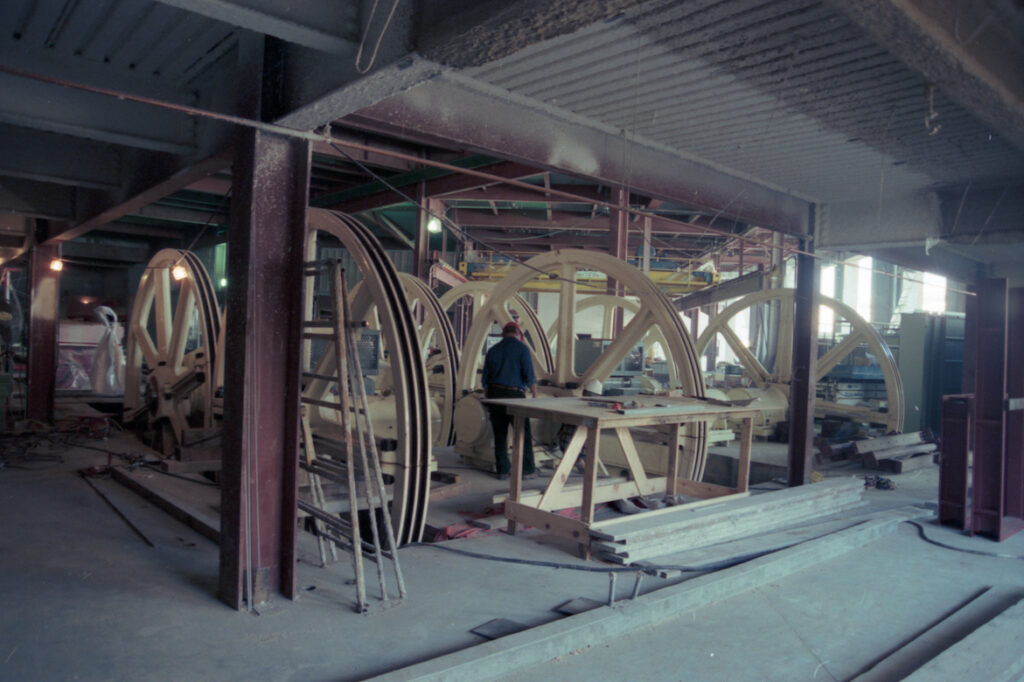
The result: a smoother-running and safer cable car system. While there were minor problems with some of the newly engineered features, such as metal pulley cover plates making a racket when automobiles ran over them, these were addressed.
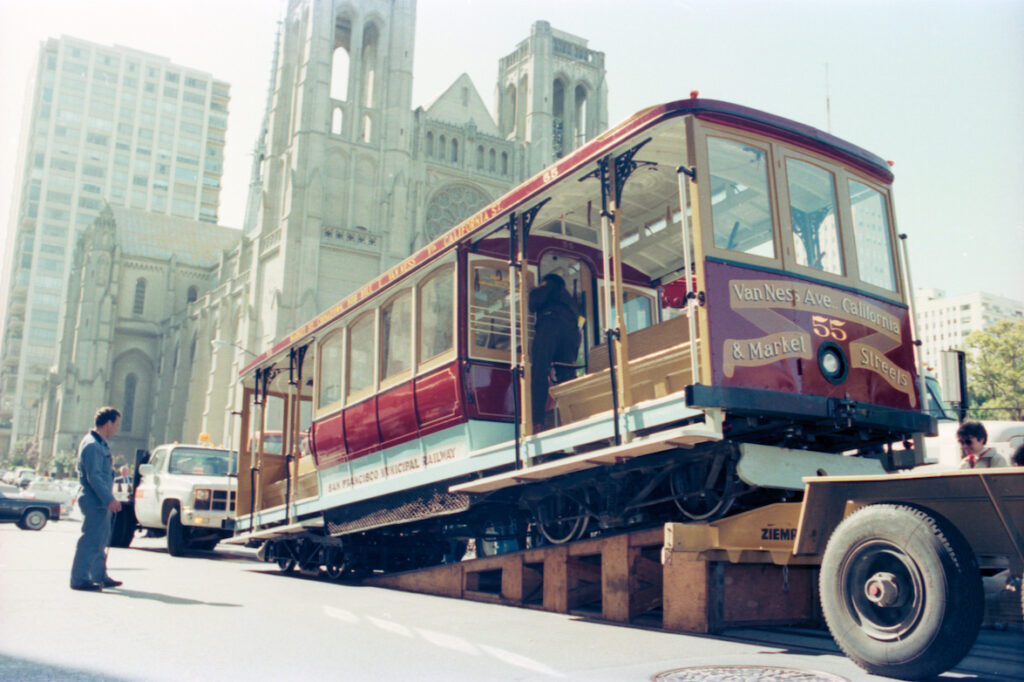
Vintage Streetcars Substitute
Concerned that even a 19-month loss of the cable cars would hurt tourism, Mayor Feinstein approved a plan put together by transit advocates including Maurice Klebolt and Rick Laubscher, who would become leaders of the nonprofit Market Street Railway. Backed by the Chamber of Commerce, it assembled vintage electric streetcars from around the world to run during the summer of 1983 along the city’s main street, Market, on existing tracks that had just gone silent after the opening of a new Muni subway under the street. The San Francisco Historic Trolley Festival delighted locals and visitors as well. Mayor Feinstein renewed it for four more summers, with Market Street Railway acquiring and restoring additional streetcars. The Festivals led directly to the permanent F-Market & Wharves streetcar line, which complements cable car service between Downtown and Fisherman’s Wharf.
Party Time
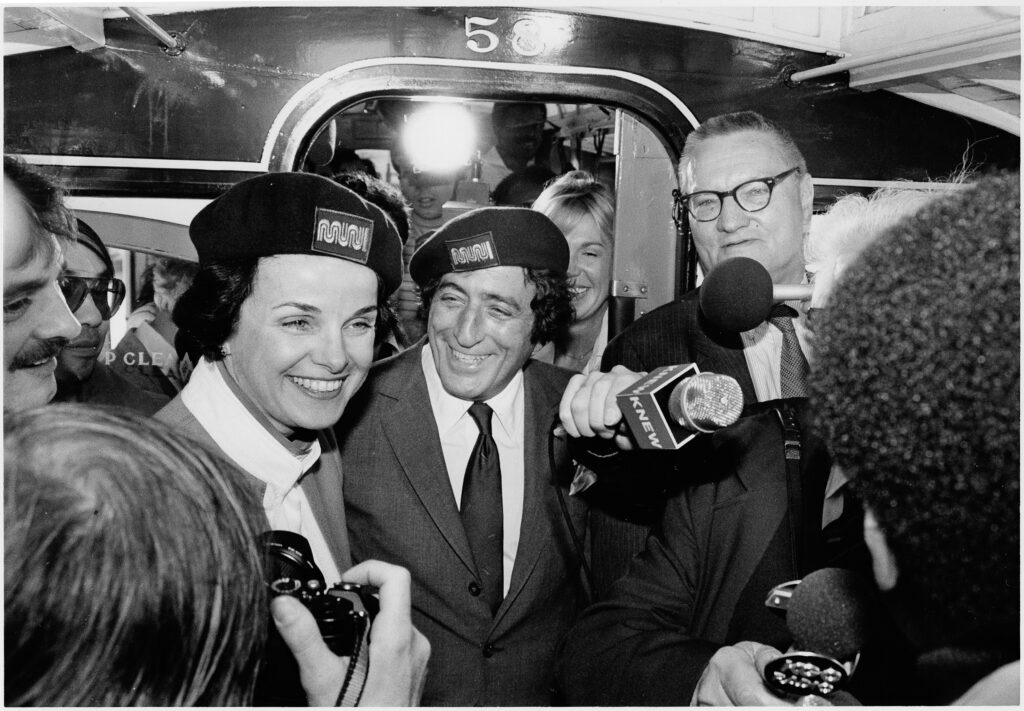
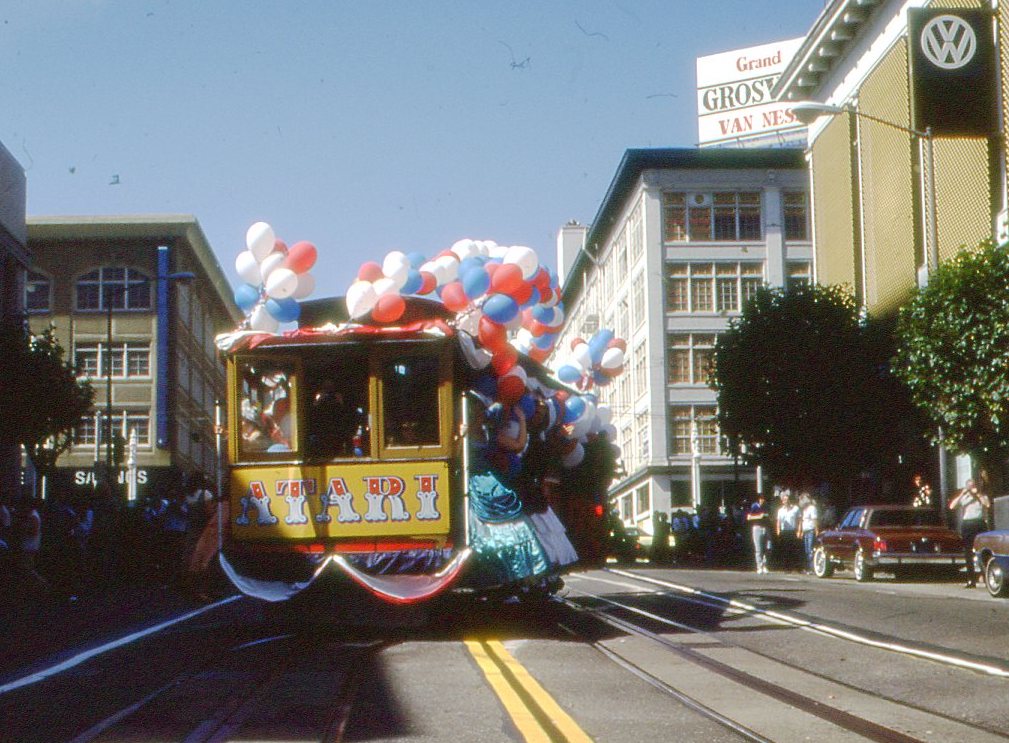
Muni and City Hall were so proud of their on-time, on-schedule achievement, they held three parties to celebrate. On May 2, 1984, Mayor Feinstein was joined by City, Muni, and corporate top brass and thousands of other San Franciscans to celebrate the return of the California line with a parade on that street. Two days later, the Mayor broke a bottle of champagne on the bricks of the restored Cable Car Barn to christen it. Then, on June 21, another parade marked the reopening of the Powell lines, in time to welcome delegates to the Democratic National Convention, as Feinstein had pledged would happen.
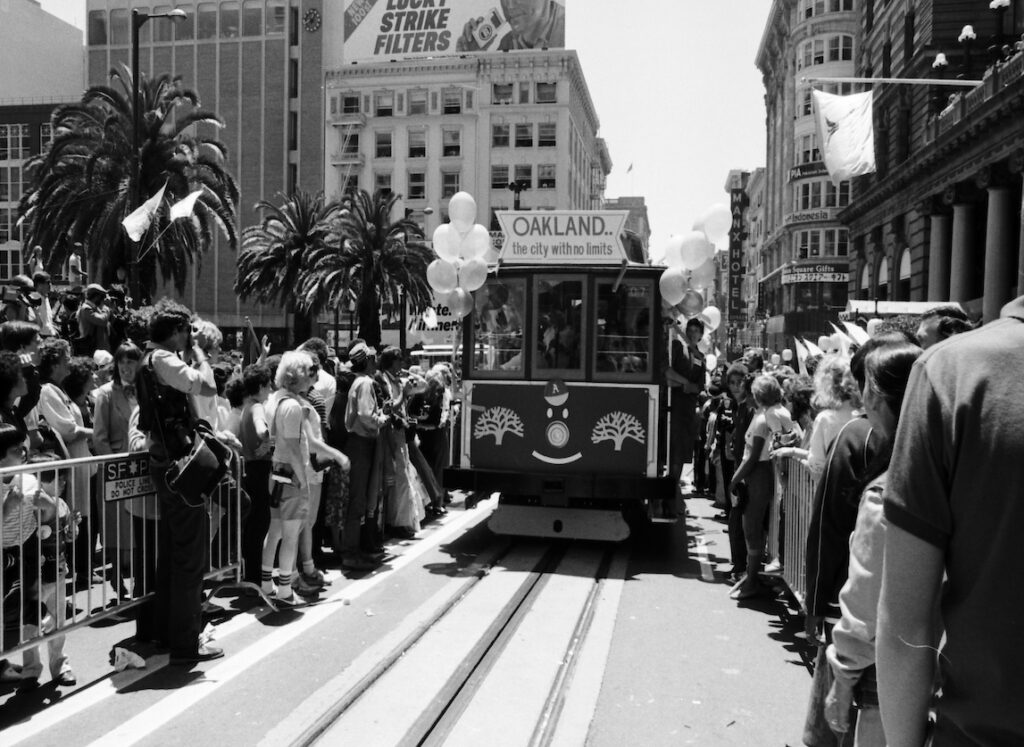
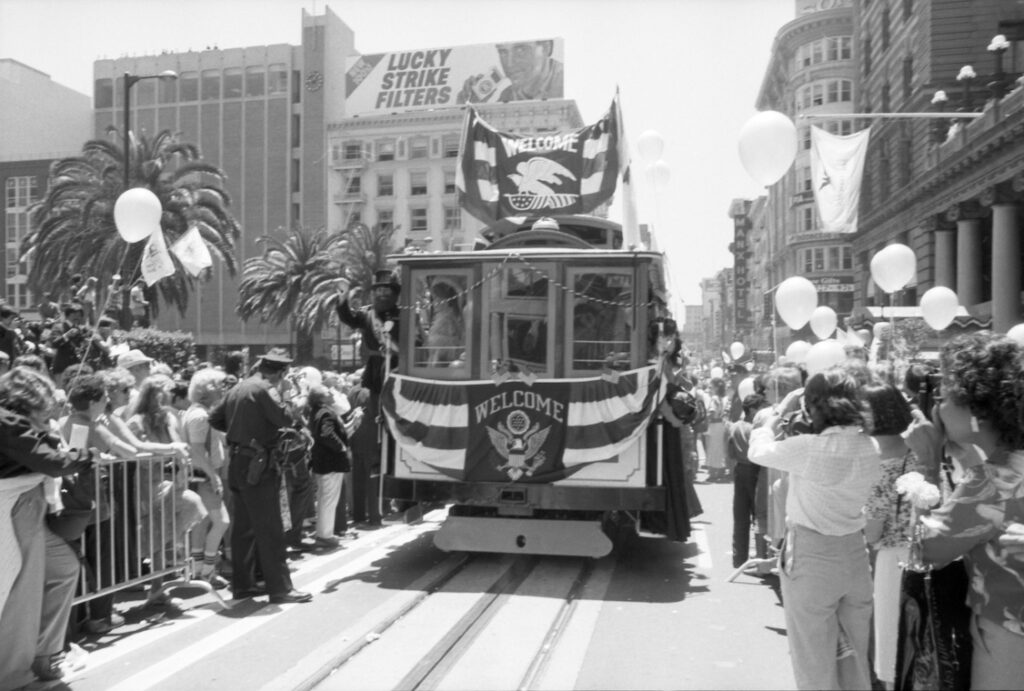
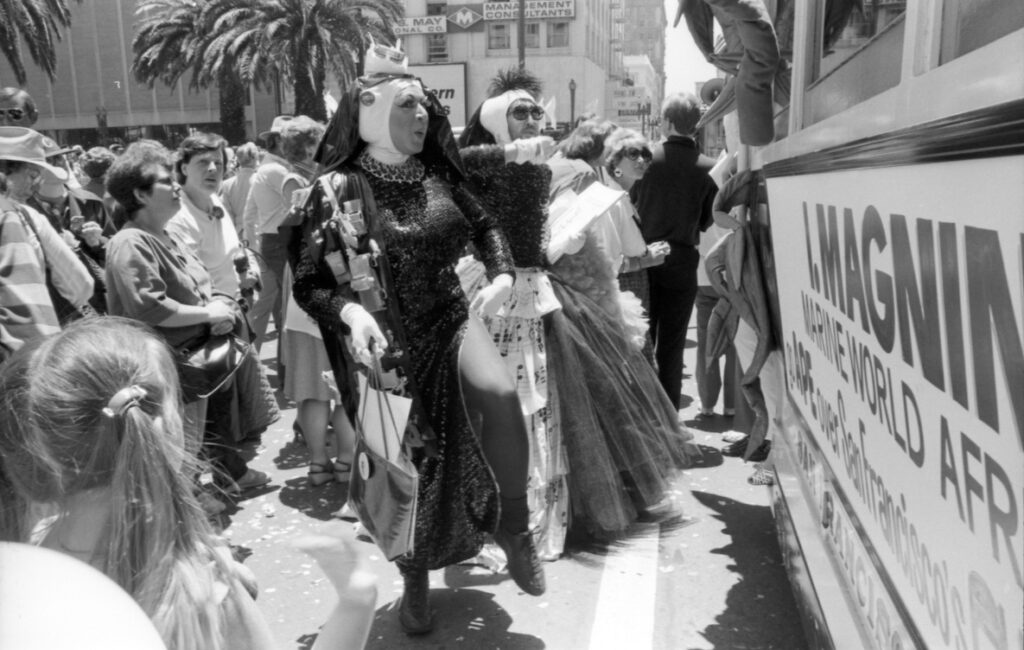
More safety, slightly less flavor
Perhaps inevitably, some of the flavor of the old system was lost: the clatter at Geary and Powell when the cable car passed over the remnants of the Muni B and C line streetcar tracks; the Belgian block between the rail in segments of Hyde Street; the lurch as wheels dipped into a trough in the track caused by subsiding streets. Now it was uniform, predictable, homogenized. And the rush to open led Muni to defer installation of the new track crossover for the Powell Street terminal that would’ve allowed longer California cars to augment Powell service if needed. They stored the expensive special track work instead, saying they would install it within a year, but it never was. And somehow, that special work, weighing ten tons, somehow just disappeared (to the frustration of our nonprofit).
No question, though, that the cable car system couldn’t have gone on the way it was. It was the proverbial accident waiting to happen–perhaps a catastrophic accident that might have called the wisdom of preserving the system into question. The reconstruction project significantly lessened the chances of that happening.
What mattered most to San Franciscans and visitors alike is that the cable cars were back, sooner than most observers (notably excepting Mayor Feinstein) thought possible. Muni officials pointed to the quality of the engineering by San Francisco’s own Chin & Hensolt, the construction management by O’Brien-Kreitzberg and the construction by Tutor-Saliba. The entire system was “rebuilt and ready for another 100 years of service,” they said.
So far, things look good.
–By Rick Laubscher
If you like our exclusive content, please consider even a small donation to help our nonprofit.
I was fortunate enough to ride the first revenue car from Van Ness on the day the California line reopened. The Powell Street cars were still running with sandbags instead of passengers. I have the first day certificate and dated transfer, framed in my den.
Anyone know why the banners along Hyde Street say ’20 years?’
On my first visit after the shutdown, I saw some of the crumbling brickwork and rusty iron of the old structures, and agreed with the engineers that an full rebuilding was the only option to keep the cable system running into the future. Later I took pictures of the construction process, seeing modern methods make the line safe for the old-timey cars. I even saw an experimental air-operated grip at the storage barn where the cars were kept “for the duration”; apparently it didn’t “make the cut” and is now a footnote in cable car history. Not sure what today’s gripmen would say, but they’re still “taking rope” like their precessors did a hundred years ago. The Geary St. track crossing was mentioned; as I recall there were some vestigial remnants of long-gone cable line crossings, probably at Sacramento and/or Clay, on Powell also. Losing these artifacts is a small price to pay for seeing the cars still running in the 21st Century.
Bob, amen to that. I didn’t mention the banked curves at Powell and Jackson which eliminated the thrill of feeling like you were going to fall off the car as it lurched left. (Of course, it also reduced the potential for lawsuits, so another worthwhile tradeoff.)